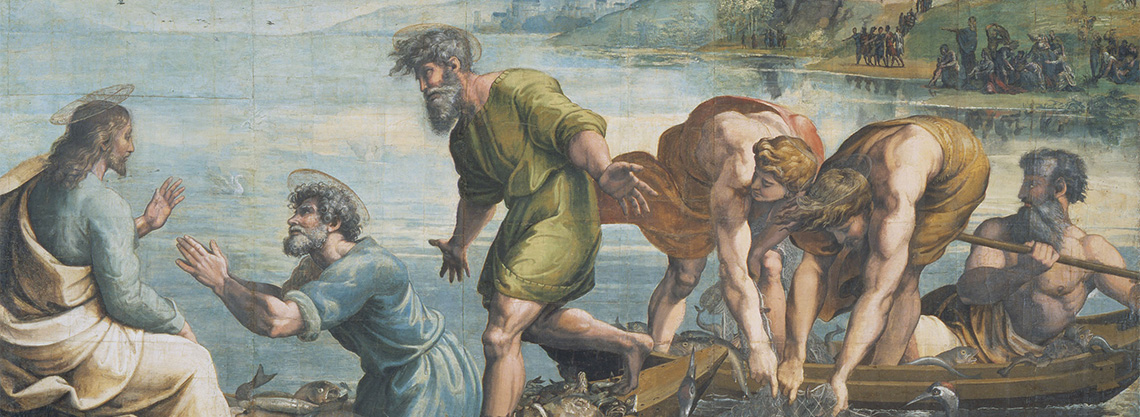The Raphael Cartoons
Treasures of the High Renaissance

These seven cartoons were executed by Raphael and his studio for a series of tapestries commonly called the Acts of the Apostles. The cartoons were purchased by the future Charles I in 1623 and are on loan from Her Majesty The Queen to the Victoria & Albert Museum. The ten original tapestries, intended to be hung in the Sistine Chapel on feast days, are housed in the Vatican Museums. Three of Raphael’s preparatory studies for the cartoons are also in the Royal Collection.
Soon after his election in March 1513, Pope Leo X commissioned Raphael to design a set of tapestries of the Acts of the Apostles, to be hung in the Sistine Chapel (below Michelangelo’s frescoed ceiling, which had been completed the previous year). The tapestries were to be woven in the workshop of Pieter van Aelst in Brussels, and during 1515 and 1516 Raphael and his studio painted ten full-scale ‘cartoons’ to serve as models for the weavers. The cartoons were painted in a thick gouache or bodycolour on many sheets of paper, overlapped and pasted together. Raphael devoted great care to the execution of the cartoons, and an unusually large proportion of the painting seems to be in the master’s own hand.
The cartoons were sent to Flanders and cut into vertical strips a metre or so wide for easier handling, and by July 1517 the weaving of the tapestries had begun. As tapestries are woven from the back, the compositions of the tapestries are reversed with respect to the cartoons. Seven of the tapestries had been delivered to Rome in time for their exhibition in the Sistine Chapel on 26 December 1519, and all ten feature in an inventory of Leo’s tapestries compiled on his death in December 1521.
All but one of the original cartoons, meanwhile, remained in Flanders, where further sets of tapestries were woven from them over the next few years. By the early seventeenth century, seven of the cartoons – still in strips – had found their way to Genoa, in the north-west of Italy. On 28 March 1623, Charles I (then Prince of Wales) wrote from Madrid to request that money be put aside for
certain patterns to be brought out of Italy, and sent to us in England for the making thereby a Suite of Tapestry, which drawings ... are to cost near upon the point of seven hundred pounds
Prince Charles, future King Charles I
The cartoons were bought primarily to serve as models for the tapestry factory established by James I in 1619, at Mortlake in south-west London, and several partial sets of the Acts of the Apostles were woven over the next two decades.
The purely artistic (rather than functional) value of the cartoons was not fully exploited until the end of the seventeenth century, when William III ordered that the strips be reintegrated and the cartoons hung in a gallery at Hampton Court Palace designed by Sir Christopher Wren. Apart from a period at Buckingham House in the 1760s, and occasional public exhibition in London, the cartoons remained at Hampton Court until 1865, when they were placed on loan at the South Kensington Museum (now the Victoria and Albert Museum).







